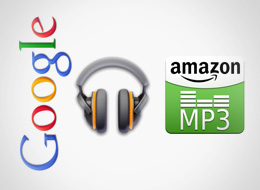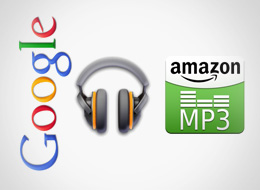To the delight of digital music lockers, the week saw certain amazing new developments in the same regard. First it was Apple that surprised the users of the USA with its iTunes Match, and then it was the time for the launch of Google Music. In the new territory of cloud music storage, these two key players will be competing with the Amazon’s Cloud Player which is now integrated with the new Kindle Fire.
The three distinguished giants offering similar services have just one single driving force; the mission to let users buy new music and under the cloud network, access current libraries via multiple devices.
A detailed comparison of all the services under different sections is provided further ahead in the article:
Highlights of Contents
Pricing
Google Music is available for free for all users including all the users accessing it through web, desktop or mobile phones. However, Google does have a library limit of 20,000 sounds, the purchased tuned are not included in it.
iTunes Match comes with an annual cost of $24.99 and provides users the facility to upload 25,000 songs. The songs purchased are not counted in it. Macworld also provides an easy solution for the users who have crossed 25,000 in their iTunes library but still wish to use the service.
Amazon’s offers its users a free download for up to 5GB of downloads, sans the MP3 purchases from amazon.com. Further the plan of 20 GB storage for any type of data begins with $20 a year; the space for music being limitless.
Our Verdict: Google Music emerges victorious because it is freely available, however the $20 payment for unlimited song storage by Amazon.com emerges a close second.
Mobile Access
It goes without saying that Apple’s mobile solution provides the most limited mobile access. It is only the iOS devices that provide access to files and playlist syncing. For users of iPhone, iPad, iPod touch and Apple TV owners, this is great. But this doesn’t give other mobile network users any reason to rejoice.
Amazon is a step better and it provides a mobile app for Android and an iPad compatible web view of its library. The app aMusic, though is not yet available in App Store, but it provides a good way for iOS users to easily access their Amazon Cloud Player files.
Perhaps designed for success, the music.Google.com is compatible with not just Android but with other popular web browsers as well. Even if you visit the site with an iOS device, you would be greeted enthusiastically with a amazingly designed HTML 5 app player.
Our Verdict: The only cross browser and cross platform compatible, Google again emerges victorious.
Cloud Listening
iTunes provides you with a really smooth and comforting song listening. Streaming songs within iTunes is almost like comfortably listening a localized file. The songs and albums are showed in the iTunes together, regardless of if they were downloaded locally or not.
The rest of the two giants have employed web based playback systems for the same purpose. Amazon’s playback system is the clumsiest. Though it allows you to search the song of your choice through album, artist, song title or playlist but streaming and navigating through it could be a burdensome task.
Our Verdict: Undoubtedly Google Music again is the winner; the only service which easily enables you to access your library from mobile and desktop, regardless of the platforms.
Overall
All three cloud music and storage platforms have their advantages and disadvantages. For Android users, Google Music is a great option with a lot of flexibility for mobile — despite some limitations on the desktop side, for iOS users, iTunes Match offers the best user experience and Amazon is more of a mixed bag.

